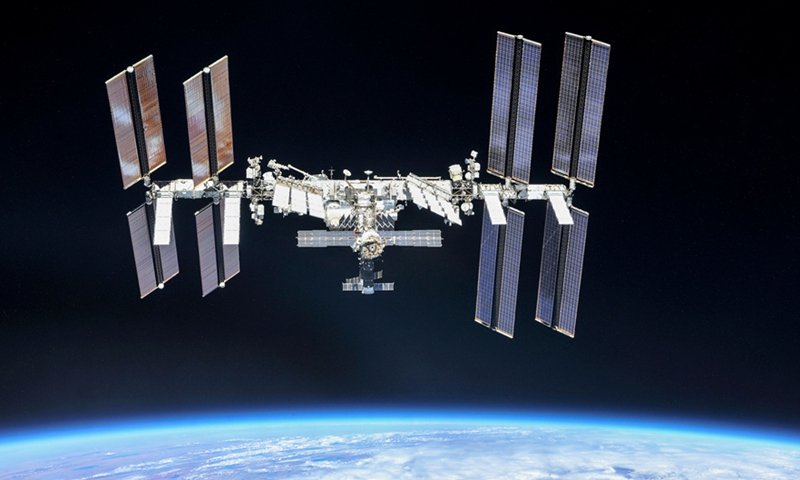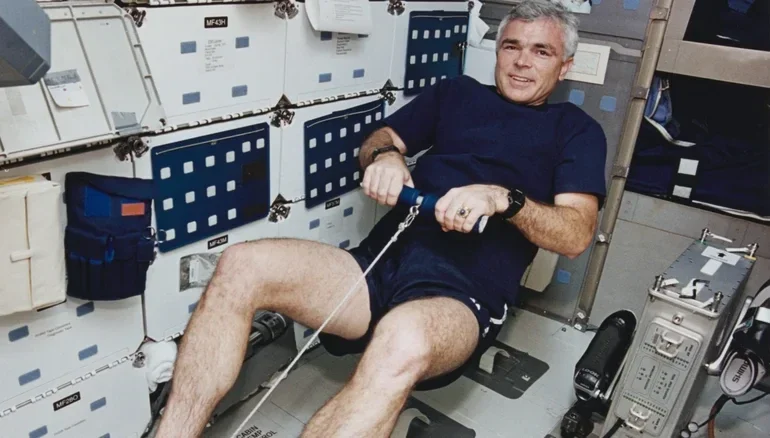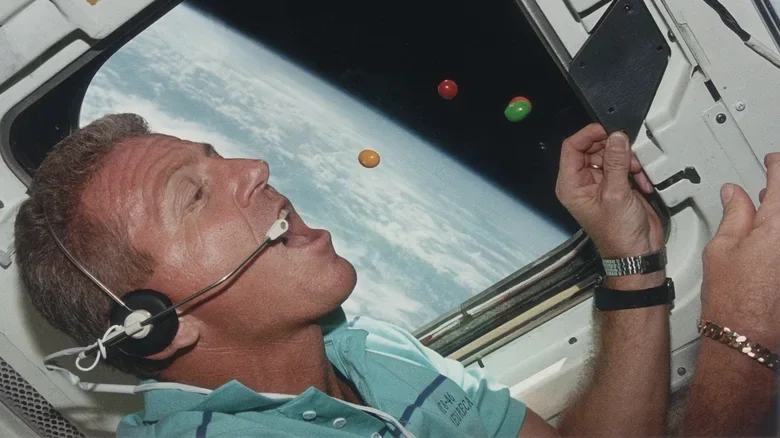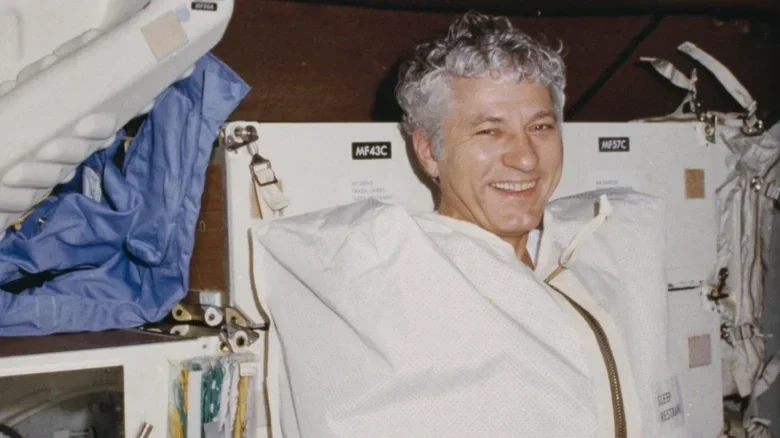Most of you admire and envy the astronauts on the International Space Station but you may not realize that things are not rosy and you probably wouldn't want to live a day there.

The International Space Station began construction in November 1998 and its first crew landed in November 2000. It has grown a lot since then and is still in development today. The ISS today is used to conduct research and experiments that would be impossible on Earth.
It is a technological marvel and an incredible feat of engineering and it is why almost all advanced countries have done it, since as its name implies it is international.
The crew on the ISS can number up to seven people. And these astronauts go through extensive training to make sure they'll be able to withstand the unique environmental stresses that come with living on the ISS.
Living on the ISS is much more difficult than you might have imagined, since the crew has to completely change their daily routine.
This is because everyday tasks and bodily functions that on Earth require little thought can suddenly become very difficult in microgravity.
Let's see what astronauts face so you can understand how life on the ISS is different from yours today and if you could even go there as a guest.
Many nationalities in the same space

The International Space Station is manned by many nationalities. Among them are the United States with NASA, Russia with Roscosmos, Japan with JAXA, the European Space Agency and the Canadian Space Agency with countries such as Italy, Germany, France, Spain and the United Kingdom .
Brazil was also a partner between 1997 and 2007, and there have been discussions about other nations joining, such as China.
That is why the International Space Station is called International. Many nations participated in the design of the facility and continue to help operate it through a series of partnerships and agreements, which is necessary considering the enormous cost of the project, which is estimated to exceed $100 billion.
The station has so far been visited by about 270 people from about 21 countries, with Americans having the most visits. This means that anyone going to the ISS will almost certainly have to work with people of other nationalities who are there.
Because of this, those who go to the ISS usually speak more than one language, and basic knowledge of Russian and English is essential, as both NASA and Roscosmos are responsible for various procedures on the station, and communication is key to safety and security. effectiveness. Of course racism and nationalism have no business on the space station.
If you go you will stay a long time

If you decide to go to the ISS be sure to stay there for a long time. The cost of an astronaut going back and forth is too high and cannot be done often.
After the Space Shuttle was discontinued, NASA was forced to send its astronauts to the ISS via the Soyuz spacecraft from Russian soil at an increasingly expensive cost.
Estimates show that NASA is charged about $86 million per astronaut. While that number will likely drop once Boeing and SpaceX begin ferrying cargo and crew to the ISS from US soil, it's still prohibitively expensive to rotate people around the station frequently.
This means for the ISS crew that they will have to stay on the station for a long time before another shuttle can bring them home. According to the Kennedy Space Center, the average mission length for astronauts going to the ISS is about six months. With the station orbiting Earth 16 times a day, the crew will circle the planet thousands of times during their mission.
Some astronauts will spend much more time on the ISS. Scott Kelly, Frank Rubio and Mark Vande Hei spent 340, 371 and 355 days respectively. Crown it, almost a year.
Peggy Whitson holds the current US record for total cumulative time on the ISS, 655 days across multiple missions.
Daily exercise

Don't think of visiting the ISS as going on vacation. Astronauts are expected to do a lot of exercise while in space.
There are several reasons why ISS residents need to stay fit, the main one being that it will keep everyone on board as healthy as possible, which is especially important considering the lack of medical supplies and doctors on the station .
This is why NASA and other space agencies subject candidates to such a dynamic program examinations and tests, to help reduce the chances of any medical emergencies on the ISS.
This is also why the crew has medical training to perform basic first aid and procedures.
However, space also poses a number of unique challenges to the human body. Weightlessness leads to bone and muscle loss as the body no longer has to work as hard against gravity. This means the crew must maintain their bones and muscles with a training program designed to make sure they don't atrophy.
It's not unusual for astronauts to spend more than two and a half hours working out in the ISS gym, six days a week.
The facility is equipped with an exercise bike, a treadmill and an advanced resistance exercise machine (essentially a weight-lifting machine) all adapted for use in the station's low-gravity environment, with straps to hold the exerciser in place.
The station is incredibly narrow
The station is very large, but the space available to the astronauts is not for the squeamish. The ISS is so massive that you can see it with the naked eye from Earth when it passes overhead. According to NASA, the ISS is 109 meters long from one end to the other, which is slightly shorter than a standard football field.
With a livable area of over 465 square meters, the ISS is equipped with seven bedrooms and two bathrooms. If that makes the ISS sound spacious, think again. It is long but very narrow. Almost every location where the crew spends their time is restricted.
A video posted online by Russian cosmonaut Oleg Artemyev, which you can see at the beginning of this chapter, gives a good idea of what it's like to live on the ISS and travel in that confined interior.
The footage shows how difficult it can be to move around the small spaces, with the crew often having to crawl or maneuver through tiny holes.
A small tour you can do it from here too
Using the toilet is a challenge

The most common movements become complicated on the ISS as the environmental conditions on the ISS make them more difficult. Even going to the bathroom is a hassle, since microgravity prevents a toilet in space from being effective, since astronauts can't rely on simply dropping waste into the basin.
Without the help of gravity, urine, feces and other waste could easily fly and wreak havoc. No one wants to come into contact with human waste, and the waste could also damage sensitive equipment.
Today, the ISS crew uses an advanced vacuum toilet designed by NASA that cost about $23 million and is much easier to use than previous ones. models, by both male and female astronauts.
This toilet has two different parts, depending on the needs of the moment. A funneled tube held tightly to the skin is used for urination, absorbing all the fluid as it passes out of the body. Unlike previous toilets, the crew can use this hose while standing or sitting, making them more comfortable.
Defecating requires the person in question to sit on a small seat that creates a skin seal, with the toilet immediately activating suction to remove the waste and prevent any odors from spreading. The wipes and paper are then disposed of in special bins, along with the gloves astronauts wear throughout the process.
Water is precious

Sending supplies to the ISS is an expensive endeavor. The heavier a spacecraft is, the more fuel it will need to reach the station, greatly increasing the cost.
Imagine that NASA signed contracts with SpaceX and the Orbital Science to deliver cargo to the ISS at a cost of $1 billion per mission. According to a rough calculation, a bottle of water costs 10.000 dollars.
Given this expense, it makes perfect sense that NASA and other space agencies would want to recycle as much water as possible to either save money or use the space for other payloads.
While the Russian ISS crew does not recycle their urine, the American side does just that. NASA and allied astronauts recycle up to 98% of the water content of urine by separating the water from other waste. This helps them recover 6.000 liters of water every year through the Environmental Control and Life Support System.
This system extracts water not only from the urine but also from the sweat of the crew members present in the air through dehumidifiers.
Iodine is added to the filtered water so that the crew can safely drink it. Astronauts on the ISS have confirmed that it tastes no different from bottled water and that it just takes some time to get used to the fact that the water has been recovered from urine and other sources.
Food is not a pleasure

Besides water and bathroom use, another key element necessary to keep the crew healthy on the ISS is food. The microgravity environment on the station can make eating meals quite difficult.
It is unthinkable to have crumbs because they could easily fall in and thus create an unhealthy living space or even damage highly sensitive equipment.
Some foods, such as bread, are completely prohibited because they produce too many crumbs and require a special preparation method. Meals are generally freeze-dried.
With the freeze dry method, the raw material is instantly frozen at a temperature lower than -40° and at the same time the atmospheric pressure drops, resulting in the moisture from a solid form (ice) turning into gases. The product of this treatment remains with 8% moisture so that it can maintain a shape, preserves the taste, does not need preservatives, weighs less and does not spoil.
Food is usually packaged in special containers that help prevent the contents from floating. This can include Velcro or magnets, keeping packed meals attached to a surface while the crew eats.
One thing that many people may not have considered about eating in space is how the taste is affected. The lack of gravity causes astronauts to suffer from congestion throughout their stay on the ISS, with constantly stuffy noses and sinuses.
This can reduce the sense of taste and often results in the crew feeling that the food is bland. To combat this, many crew members will opt for meals with more intense flavors so that eating doesn't lose all its enjoyment.
There is an extremely tight schedule

The ISS crew has for each day carefully planned movements and in fact in five minute steps. The Ops Planner, a division of NASA responsible for planning each crew member's day, determines what an astronaut will be doing at any given moment.
From the moment they wake up until they go to bed, they must adhere to a predetermined schedule that makes the best use of their time. Their free time is minimal.
From meals to scheduled training times, an astronaut has their entire day planned out. This also makes sense because these astronauts participate in a whole range of research projects and experiments, as well as spacewalks outside the ISS, for maintenance.
For example, Peggy Whitson and Jack Fischer spent a lot of time on the ISS conducting research experiments. Throughout their time on the station, they studied everything from new cancer treatments to the effects of microgravity on an astronaut's eye.
The pair also installed equipment on the ISS for the measurement of cosmic rays and participated in research to determine stem cell growth in space.
Sleep is a challenge

Sleep is another basic bodily function that is difficult to do when in space. This is largely due to the weightlessness of the ISS environment, as it is far from Earth's gravitational pull.
Unlike on Earth, where you can lie in a bed, the microgravity of the ISS makes this impossible. However, sleep is important, as fatigue could affect an astronaut's ability to perform essential tasks and stay healthy while in space.
To get proper rest the ISS crew sleeps in specially built sleeping quarters that are roughly the size of a telephone booth. Once inside this space, they are put into a sleeping bag and strapped to the wall to stay in place.
Without these attachments, they can fly around, damaging the station or injuring themselves. They can also make use of Velcro to keep their head resting on pillows that are tied in place.
The experience is very different and can take a long time to get used to. Retired astronaut Scott Kelly told the Travel and Leisure that the lack of blankets and pillows is incredibly strange.
He said characteristically that "All our lives, we sleep with blankets and we feel this pressure. So when you don't have it anymore, it feels a little strange."
There is no peace

If you want to go to the ISS so that we don't hear the hustle and bustle of the city, you probably didn't calculate well.
The ISS weighs more than 400 tons and is packed with countless pieces of equipment and technology that not only keep the station running but also help the crew conduct research and experiments while in space.
There are also the vital life support systems that make the environment hospitable to humans by constantly recycling air and water. All of these are not silent and instead add up to a loud constant hum that never goes away.
Former astronaut Thomas Jones he told Smithsonian Magazine that the ISS crew in the early days of the station had to wear earplugs to prevent damage to their hearing.
However, upgrades to the station's systems have reduced background noise to a more acceptable level. However, it remains constant and can be distracting, at least at first.
"At night, the crew members sleep in the soundproofed spaces, giving their ears a chance to rest and recover," Jones explained. "Regular audiogram testing helps the crew detect any changes in their hearing before permanent damage occurs."





